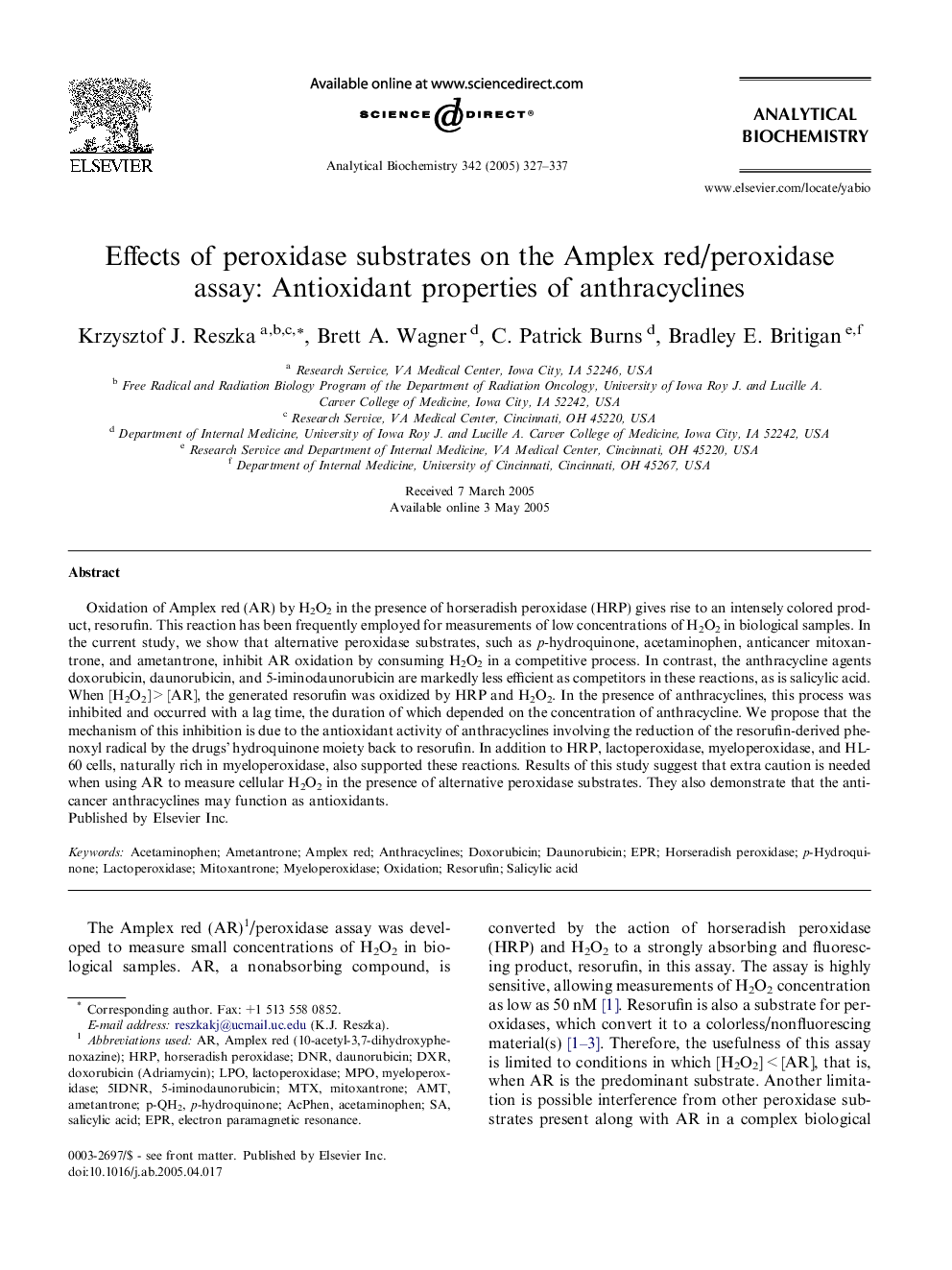| Article ID | Journal | Published Year | Pages | File Type |
|---|---|---|---|---|
| 10533081 | Analytical Biochemistry | 2005 | 11 Pages |
Abstract
Oxidation of Amplex red (AR) by H2O2 in the presence of horseradish peroxidase (HRP) gives rise to an intensely colored product, resorufin. This reaction has been frequently employed for measurements of low concentrations of H2O2 in biological samples. In the current study, we show that alternative peroxidase substrates, such as p-hydroquinone, acetaminophen, anticancer mitoxantrone, and ametantrone, inhibit AR oxidation by consuming H2O2 in a competitive process. In contrast, the anthracycline agents doxorubicin, daunorubicin, and 5-iminodaunorubicin are markedly less efficient as competitors in these reactions, as is salicylic acid. When [H2O2]Â >Â [AR], the generated resorufin was oxidized by HRP and H2O2. In the presence of anthracyclines, this process was inhibited and occurred with a lag time, the duration of which depended on the concentration of anthracycline. We propose that the mechanism of this inhibition is due to the antioxidant activity of anthracyclines involving the reduction of the resorufin-derived phenoxyl radical by the drugs' hydroquinone moiety back to resorufin. In addition to HRP, lactoperoxidase, myeloperoxidase, and HL-60 cells, naturally rich in myeloperoxidase, also supported these reactions. Results of this study suggest that extra caution is needed when using AR to measure cellular H2O2 in the presence of alternative peroxidase substrates. They also demonstrate that the anticancer anthracyclines may function as antioxidants.
Keywords
Related Topics
Physical Sciences and Engineering
Chemistry
Analytical Chemistry
Authors
Krzysztof J. Reszka, Brett A. Wagner, C. Patrick Burns, Bradley E. Britigan,
